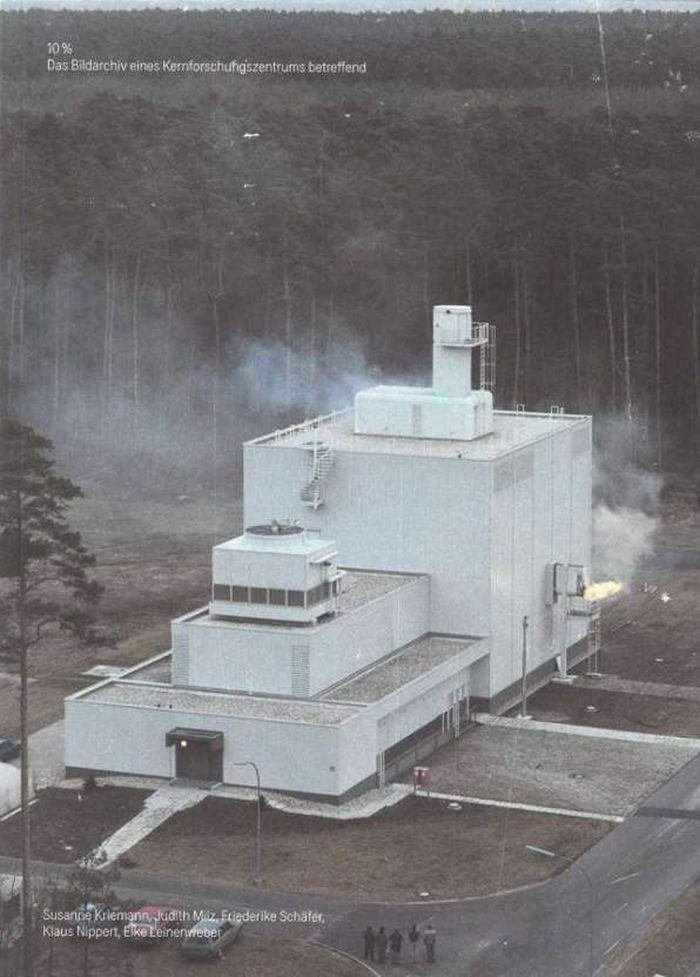$70.00
(disponible en magasin)
Résumé:
Unknown lady in the radiation protection department, puddle, dancing couple in costume, damage to a waste drum, retiree send-off, lead shielding, burnt-out glovebox, scorpion with microchip—these are all captions to photographs of Germany’s first major nuclear research facility. In 1957, professional photographers began to make an on-site record of procedures at the(...)
10% : Das bildarchiv eines kernforschungszentrums betreffend
Actions:
Prix:
$70.00
(disponible en magasin)
Résumé:
Unknown lady in the radiation protection department, puddle, dancing couple in costume, damage to a waste drum, retiree send-off, lead shielding, burnt-out glovebox, scorpion with microchip—these are all captions to photographs of Germany’s first major nuclear research facility. In 1957, professional photographers began to make an on-site record of procedures at the Kernforschungszentrum Karlsruhe (KfK, Karlsruhe Nuclear Research Center). In 2017, the decision was made to digitize ten percent of this image archive. Based on current concerns regarding the whereabouts of contaminated nuclear waste, the publication brings together over thirty perspectives from the fields of art, sociology, politics, and science as well as accounts of people who were directly involved with the facility. ''10%: Concerning the image archive of a nuclear research center'' sets out to delineate and visualize the afterlife of nuclear research. German edition.
Mining photography
$63.00
(disponible sur commande)
Résumé:
Photography has always depended on the extraction and exploitation of so-called natural raw materials. Having started out using copper, coal, silver, and paper—the raw materials of analogue image production in the nineteenth and twentieth centuries—photography now relies, in the age of the smartphone, on rare earths and metals like coltan, cobalt, and europium. The(...)
mars 2023
Mining photography
Actions:
Prix:
$63.00
(disponible sur commande)
Résumé:
Photography has always depended on the extraction and exploitation of so-called natural raw materials. Having started out using copper, coal, silver, and paper—the raw materials of analogue image production in the nineteenth and twentieth centuries—photography now relies, in the age of the smartphone, on rare earths and metals like coltan, cobalt, and europium. The exhibition focuses on the history of key raw materials utilized in photography and establishes a connection between the history of their extraction, their disposal, and climate change. Looking at historical and contemporary works, it tells the story of photography as a history of industrial production and demonstrates that the medium is deeply implicated in human-induced changes to nature. The exhibition shows contemporary works by a range of photographers and artists, including Ignacio Acosta, Lisa Barnard, F Cartier, Susanne Kriemann, Mary Mattingly, Daphné Nan Le Sergent, Lisa Rave, Alison Rossiter, Metabolic Studio’s Optics Division, Robert Smithson, Simon Starling, Anaïs Tondeur, James Welling, Noa Yafe and Tobias Zielony, along with historical works by Eduard Christian Arning, Hermann Biow, Oscar and Theodor Hofmeister, Jürgen Friedrich Mahrt, Hermann Reichling, and others, and historical material from the Agfa Foto-Historama in Leverkusen, the Eastman Kodak Archive in Rochester and the FOMU Photo Museum in Antwerp as well as mineral samples collected by Alexander von Humboldt from the collection of the Museum für Naturkunde, Berlin.

